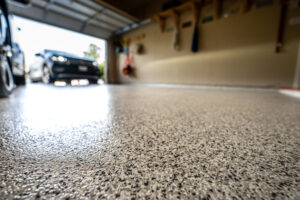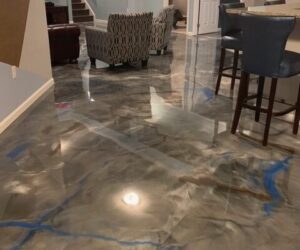Cracks in concrete are a common issue that can detract from the appearance and integrity of your structure. Whether you’re working on a residential patio, commercial floor, or any other concrete project, it’s essential to take proactive steps to minimize the chances of cracking. Cracks are often caused by factors such as shrinkage, improper curing, or inadequate reinforcement, but the good news is that with the right techniques and materials, they can be prevented. Here’s a guide from The Concrete, Etc., a trusted provider of concrete solutions in Gaithersburg, MD, on how to prevent cracks in concrete.

The first step to preventing cracks in concrete is ensuring that the mix design is appropriate for your specific project. Concrete that has too much water in the mix is prone to shrinkage, which is a primary cause of cracking. By using the correct water-to-cement ratio, you can reduce the risk of shrinkage. The Concrete, Etc. recommends consulting with experts to develop a mix that provides the right balance of strength and workability for your project in Gaithersburg, MD.
Additionally, adding chemical admixtures, such as water reducers, can help maintain the proper consistency without increasing the water content. This approach minimizes shrinkage while ensuring the concrete is still easy to work with.
2. Ensure Proper Subgrade Preparation
A well-prepared subgrade is essential for preventing cracks. The subgrade serves as the foundation for the concrete, and any movement or instability in this layer can lead to cracking. Make sure that the subgrade is compacted and leveled before placing the concrete.
In Gaithersburg, where soil conditions can vary, The Concrete, Etc. recommends performing a thorough assessment of the subgrade to ensure it’s stable and well-drained. Poor drainage can lead to water accumulation beneath the concrete, causing it to heave and crack during freeze-thaw cycles.
3. Install Control Joints
Control joints are intentional cuts made into the concrete surface to create weak points where cracks are most likely to occur. By installing control joints, you can ensure that cracks form along these predefined lines, minimizing the unsightly random cracking that can otherwise occur.
In general, control joints should be placed at intervals that are 2-3 times the slab thickness in feet. For example, in a 4-inch-thick slab, control joints should be spaced every 8-12 feet. The Concrete, Etc. can help you determine the appropriate placement of control joints in your project to effectively control cracking.
4. Cure the Concrete Properly
Curing is a critical step in the concrete installation process that allows the concrete to hydrate and gain strength gradually. Improper curing can lead to rapid drying, which causes shrinkage and cracks. To prevent this, it’s essential to keep the concrete surface moist for an adequate period—typically at least seven days—after it has been poured.
There are several curing methods to choose from, including using wet coverings, plastic sheeting, or applying a curing compound. The Concrete, Etc. uses advanced curing techniques in Gaithersburg, MD, to ensure the longevity of your concrete and prevent premature cracking.

Reinforcing the concrete with steel rebar, wire mesh, or fibers can significantly reduce the risk of cracking. Reinforcement helps the concrete handle tensile stresses, which are one of the main causes of cracking. Depending on the size and scope of your project, reinforcement can be added in various forms, from steel bars in large structures to fiber reinforcement in residential applications.
The Concrete, Etc. recommends fiber-reinforced concrete for projects in Gaithersburg that require added durability and crack resistance, especially in high-traffic areas like driveways and industrial floors.
6. Avoid Overloading the Concrete
Once the concrete has been installed, it’s important to avoid placing excessive loads on it too soon. Driving vehicles or placing heavy machinery on newly poured concrete before it has fully cured can result in cracks. For most concrete slabs, it’s recommended to wait at least seven days before applying light loads and up to 28 days before subjecting the concrete to heavier use.
The Concrete, Etc. advises homeowners and businesses in Gaithersburg to plan around these time frames to avoid damaging the concrete and to allow it to reach its full strength potential.
7. Address Temperature Extremes
Extreme temperature fluctuations can cause concrete to crack due to the expansion and contraction of the material. In Gaithersburg, where temperatures can vary significantly, it’s essential to plan your concrete installation for milder weather conditions to avoid issues like rapid temperature changes during the curing process.
Concrete can lose moisture too quickly during hot weather, leading to shrinkage cracks. Conversely, cold weather can slow the hydration process, weakening the concrete. The Concrete, Etc. can help you choose the right time of year and use special additives or curing techniques to prevent temperature-related cracking.
The Concrete Etc; Preventing Cracks in Concrete Maryland
Preventing cracks in concrete requires attention to detail and a thorough understanding of the factors that cause cracks. By using a proper mix design, preparing the subgrade, installing control joints, curing the concrete properly, and incorporating reinforcement, you can significantly reduce the risk of cracking and ensure a long-lasting, durable surface.
If you’re planning a concrete project in Gaithersburg, MD, or the surrounding areas, The Concrete, Etc. is your trusted partner. With over 15 years of experience in concrete installation and maintenance, our team can guide you through every step of the process to ensure your concrete is crack-free and built to last. Contact The Concrete, Etc. today for a consultation and discover how we can help you prevent cracks and enhance the longevity of your concrete surfaces.

